Discovering Vihara Dharmayana Kuta
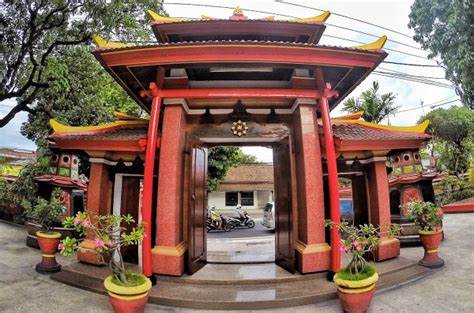
Discovering Vihara Dharmayana Kuta. Amidst the bustling streets and vibrant energy of Kuta, Bali’s most popular tourist destination, there lies a serene and sacred space that offers a stark contrast to its lively surroundings. Vihara Dharmayana Kuta, also known as Kongco Leeng Gwan Kuta, is a centuries-old Buddhist temple that provides visitors and locals alike with a peaceful retreat for spiritual reflection and quiet contemplation. With its striking architecture, rich cultural history, and serene atmosphere, Vihara Dharmayana stands as a testament to Bali’s cultural and religious diversity.
While Kuta is better known for its beaches, nightlife, and surfing, the presence of this Buddhist temple in the heart of the town is a reminder of the island’s deep spiritual roots and its harmonious blend of various religious traditions. Vihara Dharmayana Kuta, often overlooked by visitors, offers a unique cultural experience for those seeking to connect with the quieter, more reflective side of Bali.
This article will delve into the history, significance, architecture, and spiritual practices associated with Vihara Dharmayana Kuta, providing a comprehensive guide to exploring this hidden gem in Kuta.
1. History of Vihara Dharmayana Kuta

Vihara Dharmayana Kuta has a long and rich history that dates back more than two centuries. It was founded in 1876 by the local Chinese Buddhist community in Bali, making it one of the oldest Buddhist temples on the island. The temple was originally established to serve the religious and spiritual needs of the Chinese immigrants and traders who settled in Kuta, a growing hub of trade and commerce at the time.
Throughout its long history, the temple has served as a significant spiritual center for the local Buddhist community, and it has played an important role in preserving Chinese Buddhist traditions on the island. Despite Kuta’s transformation from a quiet fishing village into a bustling tourist destination, Vihara Dharmayana has remained a place of quiet devotion and spiritual practice.
One of the most important events in the temple’s history occurred in 1982, when His Holiness the 14th Dalai Lama visited Vihara Dharmayana Kuta as part of his tour of Indonesia. The Dalai Lama’s visit is still commemorated at the temple today, and it remains a source of pride and spiritual significance for the local Buddhist community.
2. Location and Access

Vihara Dharmayana Kuta is located just a short distance from Kuta Beach, making it easily accessible to visitors staying in the Kuta area. The temple is situated on Jalan Blambangan, a quiet street that offers a peaceful escape from the nearby busy roads and bustling tourist attractions. Despite its central location, the temple’s serene atmosphere makes it feel worlds away from the noise and activity of the surrounding area.
The temple is open to the public, and visitors are welcome to explore the temple grounds and observe its traditional architecture and religious practices. Admission is free, although donations are always appreciated to help with the temple’s upkeep.
3. Architecture and Design of Vihara Dharmayana Kuta

One of the most striking aspects of Vihara Dharmayana Kuta is its traditional Chinese Buddhist architecture, which stands out in the predominantly Hindu and Balinese architectural landscape of Kuta. The temple’s design is an intricate blend of Chinese and Buddhist influences, and its vibrant colors and decorative details make it a visual delight.
Entrance and Courtyard
Visitors to the temple are greeted by a traditional Chinese-style gate, adorned with red and gold accents, which are symbolic of good fortune and prosperity in Chinese culture. The gate is flanked by stone statues of guardian lions, which are believed to protect the temple from evil spirits.
Once inside, visitors enter a large courtyard, which is lined with trees, plants, and offerings. The courtyard is a peaceful and inviting space, providing a sense of calm and serenity that contrasts with the busy streets outside. The courtyard serves as a communal space where devotees and visitors alike can sit and reflect, meditate, or simply enjoy the peaceful atmosphere.
Main Shrine Hall
At the heart of Vihara Dharmayana Kuta is the main shrine hall, which is the focal point of the temple’s religious activities. The hall is a beautifully decorated space, with intricate wood carvings, lanterns, and statues of Buddhist deities and bodhisattvas. The hall is dominated by an altar, where devotees leave offerings of food, incense, and flowers as a sign of respect and devotion.
The altar features a central statue of Buddha, as well as other important figures in Chinese Buddhism, such as the Goddess of Mercy (Guan Yin) and various Taoist deities. The use of vibrant colors, particularly red and gold, reflects traditional Chinese religious symbolism and adds to the temple’s sense of sacredness.
Devotees regularly come to the temple to burn incense, pray, and make offerings at the altar. The smell of incense fills the air, and the soft glow of candles creates a tranquil atmosphere. The main shrine hall is a sacred space, and visitors are asked to be respectful and quiet when entering.
Additional Shrines and Stupas
In addition to the main shrine hall, Vihara Dharmayana Kuta features several smaller shrines and stupas (Buddhist monuments) located throughout the temple complex. These shrines are dedicated to various deities and ancestors, reflecting the temple’s role as both a place of Buddhist worship and a center for ancestral veneration, a practice deeply rooted in Chinese culture.
One of the most notable features of the temple is the pagoda-style stupa, which serves as a symbol of the Buddha’s teachings and enlightenment. The stupa is adorned with intricate carvings and statues, adding to the temple’s spiritual and aesthetic appeal.
4. Spiritual Practices at Vihara Dharmayana Kuta

Vihara Dharmayana Kuta serves as an active place of worship for the local Chinese Buddhist community, and visitors will often see devotees participating in traditional spiritual practices. These practices include prayer, incense burning, and the offering of food and flowers to the deities and ancestors.
Incense Burning and Offerings
One of the most common practices at Vihara Dharmayana is the burning of incense. Devotees light sticks of incense and place them in large incense holders located throughout the temple. The act of burning incense is a way to purify the space, honor the deities, and create a connection between the physical and spiritual worlds.
Offerings of food, fruit, flowers, and money are also placed at the altar and other shrines. These offerings are a way for devotees to show gratitude and respect to the deities, as well as to seek blessings and good fortune.
Chinese New Year and Religious Festivals
Vihara Dharmayana is especially lively during important Chinese religious festivals, such as Chinese New Year and the Lantern Festival. During these times, the temple is decorated with lanterns and other festive decorations, and special ceremonies and prayers are held to mark the occasion.
During Chinese New Year, the temple becomes a center of celebration, with traditional lion dances, the lighting of firecrackers, and the offering of prayers for prosperity and health in the coming year. The temple attracts both local devotees and visitors who come to witness the vibrant cultural festivities.
5. Cultural Significance of Vihara Dharmayana Kuta
Vihara Dharmayana Kuta is not only a place of religious worship but also a symbol of Bali’s rich cultural diversity. While Bali is predominantly Hindu, the presence of Buddhist temples like Vihara Dharmayana highlights the island’s history of welcoming different religious and cultural traditions. The temple serves as a reminder of the peaceful coexistence of multiple faiths in Bali, where Hinduism, Buddhism, and Islam all share a common space.
For the local Chinese-Balinese community, Vihara Dharmayana is a central part of their cultural and spiritual identity. The temple has played a significant role in preserving traditional Chinese Buddhist practices on the island, and it continues to be a gathering place for festivals, rituals, and community events.
6. Visiting Vihara Dharmayana Kuta
Vihara Dharmayana Kuta is open to visitors throughout the year, and it provides a peaceful and spiritual escape from the bustling streets of Kuta. While the temple is a sacred space, visitors are welcome to explore the grounds, observe the religious practices, and learn more about Chinese Buddhism.
Dress Code and Etiquette
When visiting Vihara Dharmayana, it’s important to dress modestly and respectfully, as it is a place of worship. Visitors should wear clothing that covers their shoulders and knees, and they are encouraged to remove their shoes before entering the main shrine hall.
Visitors should also maintain a quiet and respectful demeanor while inside the temple, particularly in the shrine areas where devotees are praying and making offerings.
Photography
Photography is generally allowed in the temple, but visitors should be mindful of the temple’s sacredness and avoid taking photos during prayers or ceremonies. It’s always a good idea to ask for permission before photographing inside the shrine halls.
Vihara Dharmayana Kuta is a hidden gem in Bali’s most tourist-heavy area, offering visitors a chance to experience the island’s spiritual diversity and cultural heritage. With its striking Chinese Buddhist architecture, peaceful atmosphere, and rich history, the temple is
a must-visit for those seeking a deeper understanding of Bali’s religious landscape.
Whether you’re a devotee looking for a place of worship or a traveler seeking a quiet respite from Kuta’s vibrant streets, Vihara Dharmayana provides a tranquil and enriching experience that offers a unique glimpse into Bali’s multicultural identity.


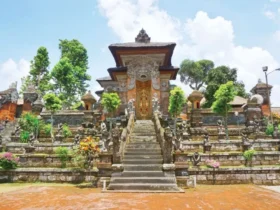
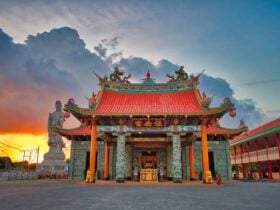
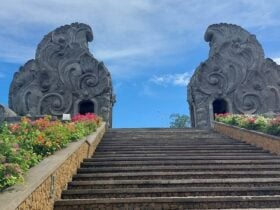


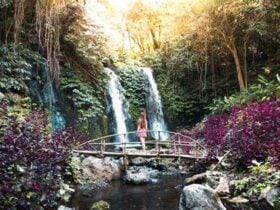
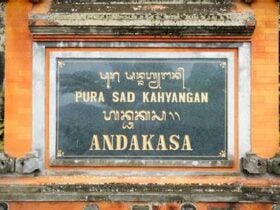

Leave a Review